48 yards. 7 yard return.
29 yards. No return.
45 yards. No return.
37 yards. 5 yard return.
39 yards. No return.
35 yards. No return.
There were two reasons why Tech almost lost to South Alabama: Field position and 3rd Down Efficiency. Okay, so probably more than two. But let’s dive in to the field position problem. What went wrong?
Last year, Tech’s average Starting Field Position (SFP) was their own 33 yard line, 28th in the NCAA. Saturday, the average SFP was their own 20 yard line (discounting the final two garbage time drives). The 13 yard difference between 20 and 33 (I double checked the math just to make sure) doesn’t sound like much, but to put it in perspective, the worst SFP in college football last year was East Carolina at their own 28. So not only was this a bad game for SFP, it was egregiously bad.
So how did this happen? How did South Alabama force Tech into so many long drives? While Sederick Cooper’s one yard interception return out of his own endzone didn’t help, the phenomenon was mostly due to South Alabama’s punt coverage unit. The punts themselves were not spectacularly long (39 yards a punt), but Tech’s longest punt return was 7 yards. And Teddy Veal is a very solid punt returner, so what kept him in check?
Punt One
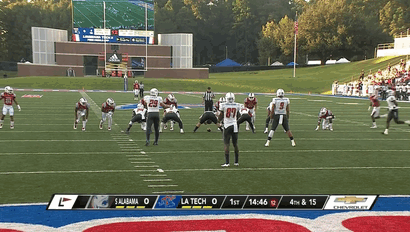
Let’s look at the first punt. The TV angles never show a sideline view before the punt for us to analyze, but we do see the center of the formation. There are five linemen in the center of the frame, two backs, and a punter before another blocker comes in to help. This leaves two “gunners” who don’t worry about blocking and simply “gun” down the field to tackle the returner. This is what you would see in a normal punt coverage.
Although we can’t see much with this selection of TV angles, on the left side of the screen, we can see South Alabama’s #7 take off at the snap and immediately beat the Tech player off the line. Veal is able to evade #7, but this Jaguar made it down the field very quickly. So even with a normal punt coverage unit, South Alabama was able to limit Veal.
Punt Two
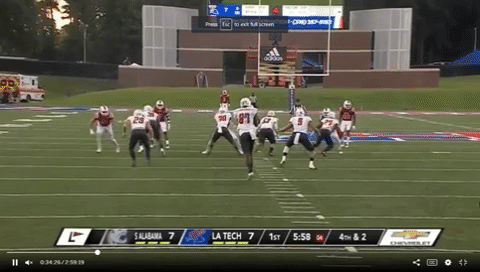
Punt Two looks very similar, but again we don’t get a sideline view to see the formation. Regardless of the kick coverage, this punt was too short for Veal to do anything with.
Punt Three
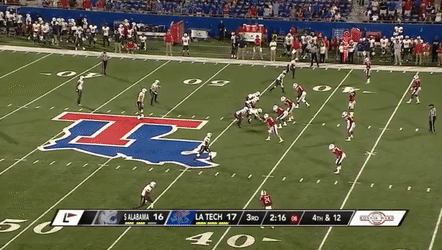
This is the first time we get to see the pre-snap formation from a decent angle, but it looks like South Alabama lined up differently than the past two times. Now they only have four linemen and two backs, which leaves four gunners to limit Veal’s return. Tech doesn’t seem to know how to line up to this formation. They end up playing it like a normal defensive play. As in Tech is lined up in a normal defensive coverage scheme.
I’m thinking Tech was worried about a fake punt here, even on 4th & 12. As a Special Teams Coach, if you haven’t seen South Alabama use this formation before, it’s a reasonable thing to be worried about. One of Tech’s “linebackers” doesn’t even move until he sees the punter kick it. I’m assuming to make sure there was no trickery.
Punt Four
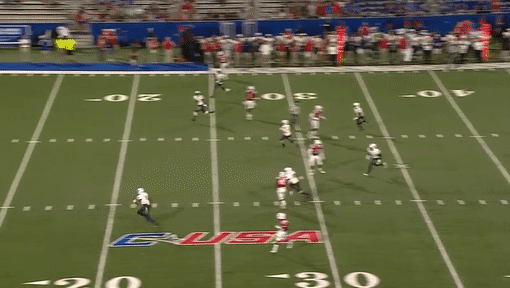
The formation had three gunners this time, but it’s not just the gunners that make an impact on this play. When Veal catches the ball, the closest seven players are Jaguars. Two Tech players show up late to try to contribute somehow, but you’ve got to start to wonder what’s going on in the special teams department.
And yes, maybe Veal should have let the ball go into the endzone and the team though he would. But if you’re a blocker, you should be blocking until you know he won’t try to return it.
Punt Five
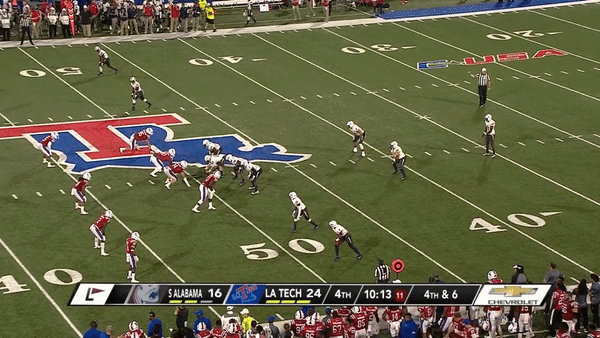
Back to four gunners, and all of them get through. At this point South Alabama is daring Tech to try to come block their punts. If Tech lines up as if they are going to attempt a punt block, South Alabama would have to bring one of the gunners in to protect the punter, and maybe then Veal would have some room to run. Tech chooses to stay conservative and defend against a potential fake punt again. The entire defensive backfield lines up on the First Down Line and watches Jaguars run past them.
Also, look at the score. Tech was only up by eight points at this point in the game. I understand playing conservative in these kinds of games, but if the score is that close sometimes you need to be aggressive. Luckily, Tech was able to drive down the field and score on the following drive, but the special teams unit wasn’t doing them any favors.
Punt Six

This was the final punt of the game. It doesn’t really show anything the previous punts haven’t already shown, only that South Alabama kept this strategy throughout. Also, at this point in the game, a being conservative isn’t a bad move strategically. Tech just needed to get the ball back to wind down the clock. Field position no longer mattered as much. But it shows that South Alabama knew this scheme was working.
Conclusion
Teddy Veal has shown what he can do as a returner. Every school we play knows what Veal can do and will want to limit the damage he can do. And South Alabama showed how to do it. I only hope the Tech coaching staff adapts and lines up in a more aggressive formation. Mostly because I just want to see something like this happen again:
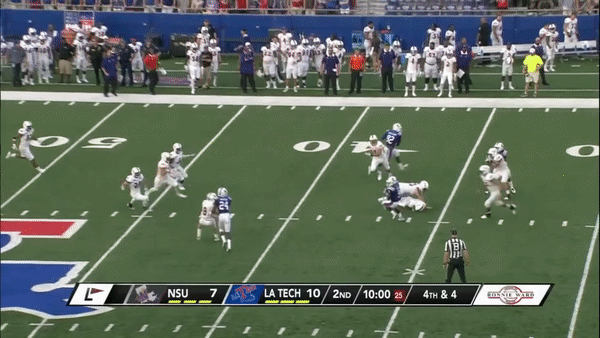
Finally, much has been said about how poorly Tech has been punting the ball this season. Between Brady Farlow and Davan Dyer, Tech is averaging 39 yards a punt. Individually, the are both ranked about 129th in the league (among 177 qualified punters). So not great. But South Alabama’s punter also averaged 39 yards per punt in this game. So that shows that Tech can make up for poor punting with solid punt coverage schemes, if they choose to do so.

Pingback: “Special” Special Teams – gtpdd